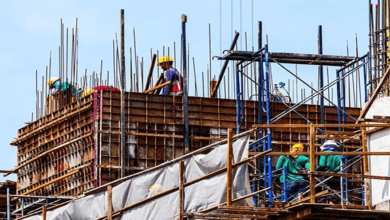Things You Need to Know about Construction Performance Bonds

While taking risks, you might require certain surety for the risk you are taking.
Construction performance bonds are a type of bond used by investors to protect against risks, disruptions, and financial loss due to the contractor’s incompetence in completing the construction projects. Besides, they also act as security when the construction contractor cannot meet the specifications mentioned in the contract.
These documents hold an essential place when it comes to large-scale projects. If the submitter cannot fulfill their statements, both the surety and the person being held liable, and the party can take legal action against them. They come in various types: bid, performance, and payment.
Why Consider Them?
Construction bonds secure you against the risk you are taking by giving the job to a third party. They protect your property as well as save it from damage by acting as an incentive for many parties without the fear of unfulfilled work or non-payments. They back up the financial security and are typically in favor of all the parties involved.
It works as an acknowledgment of the workmanship of a contractor. These bonds aid the pursuit of public contracts even when the market is down, as the public sector needs to maintain its business and the buildings.
These projects will need a bonded contractor at any time as bonds mean surety. The bondage documents avoid contract disputes as the obligee can withhold the payment or part payment whenever required.
How Do They Function?
Also known as contractor license bonds, construction performance bonds are surety documents required for almost any construction project- government and public works projects, majorly. The person seeking the job in this department is liable to put up the contract, assuring the project owner that the contractor will act based on terms and conditions stated in the agreement.
In any case, if the responsible party overthrows the words or the job isn’t done satisfactorily, the person in charge has all lawful rights to take legal action against the constructor.
They involve three parties in general:
- The owner of the project, also known as the obligee: Generally, the government or managers of any public sector enterprises are the obligees for these papers. They want their job done safely and always ask for a bond before beginning the work.
- The parties involved in construction work are constructors or contractors who have taken up the job from the obligees. They always offer construction bonds before starting the work as surety for any parties involved in the project. By submitting such documents, they state that they accept the job along with all the said terms and conditions and promise to do it as per the requirements. They, through these contracts, also state that they are liable for any work undone or not done per the specifications mentioned.
- The company that backs the bond is also known as a surety company: The contractor who submits the bond purchases it from a company. They are like banks but for construction bonds where they provide a person’s surety to the obligee after an extensive background check for liabilities and assets.
All in all, these types of documents legally reduce the risk involved in more significant projects. To both the parties involved, they grant certain rights along with some fundamental duties to ensure the smooth functioning of the project.








